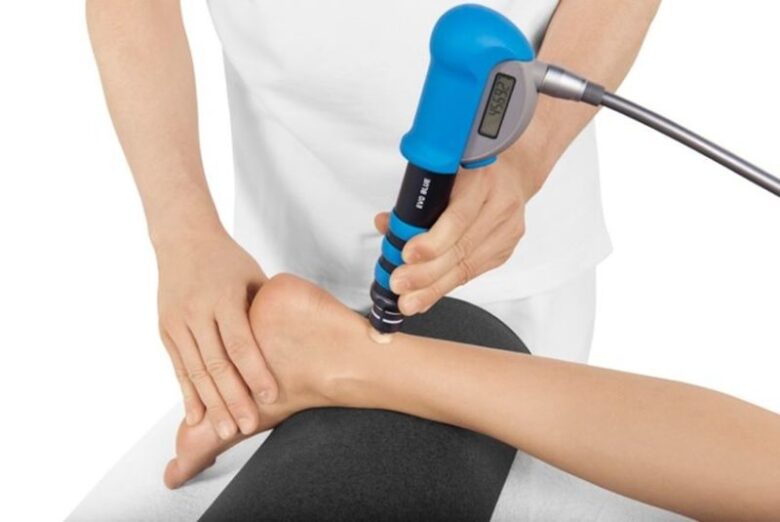The Extracorporeal CO2 Removal (ECCO2R) Market focuses on devices and systems designed to remove carbon dioxide (CO2) from the blood outside the body, typically used in patients with respiratory failure or acute respiratory distress syndrome (ARDS). These systems provide a less invasive alternative to mechanical ventilation, helping to reduce lung injury caused by high ventilatory pressures and oxygen concentrations.
Overview:
ECCO2R systems are primarily used in critical care settings for patients with severe respiratory conditions who are not adequately supported by conventional therapies. These systems work by circulating the patient’s blood through an external device where CO2 is removed via a gas exchange membrane before the blood is returned to the body. The technology is seen as a bridge or adjunct to more invasive methods like extracorporeal membrane oxygenation (ECMO) or mechanical ventilation.
Market Components:
- Types of ECCO2R Systems:
- Low-Flow Systems: Designed for partial CO2 removal in patients with less severe hypercapnia. These systems typically operate at lower blood flow rates (200-500 mL/min) and are less invasive.
- High-Flow Systems: Used for more significant CO2 removal in patients with severe respiratory failure. These systems operate at higher blood flow rates and are often more complex, requiring larger cannulas and more intensive monitoring.
- Integrated Systems: These combine ECCO2R with other extracorporeal support functions, such as oxygenation or renal support, offering a more comprehensive treatment option for critically ill patients.
- Key Applications:
- Acute Respiratory Distress Syndrome (ARDS): ECCO2R is used as an adjunct to mechanical ventilation to manage severe ARDS by lowering ventilatory pressures and preventing ventilator-induced lung injury.
- Chronic Obstructive Pulmonary Disease (COPD): ECCO2R systems can be used in COPD exacerbations to manage acute hypercapnic respiratory failure, potentially avoiding the need for invasive ventilation.
- Bridge to Lung Transplant: ECCO2R can be used in patients awaiting lung transplantation, helping to stabilize their condition by managing CO2 levels.
- Weaning from Mechanical Ventilation: ECCO2R can support patients during the process of weaning from mechanical ventilation by maintaining adequate CO2 removal.
- Patient Demographics:
- Critical Care Patients: ECCO2R is predominantly used in intensive care units (ICUs) for patients with life-threatening respiratory conditions.
- COPD Patients: Those with severe COPD exacerbations or chronic respiratory failure may benefit from ECCO2R as an alternative to or in conjunction with mechanical ventilation.
- ARDS Patients: Individuals with ARDS, particularly those who are not responding to conventional mechanical ventilation, are primary candidates for ECCO2R.
- End-User Segments:
- Hospitals and ICUs: The primary setting for ECCO2R system use, where critical care teams manage patients with severe respiratory failure.
- Specialized Respiratory Care Centers: Facilities focused on treating chronic respiratory conditions may also use ECCO2R for specific patient groups.
Market Size and Growth:
The ECCO2R market is in a growth phase, driven by the increasing incidence of respiratory diseases, advancements in critical care technology, and a growing awareness of the benefits of minimally invasive respiratory support methods. The market has seen significant interest due to the COVID-19 pandemic, which highlighted the need for advanced respiratory support technologies.
- Global Reach: The market has a strong presence in North America and Europe, with emerging markets in Asia-Pacific showing increasing interest due to rising healthcare standards and investments.
- Growth Drivers: The growing prevalence of chronic respiratory diseases, coupled with advancements in ECCO2R technology and increasing adoption in critical care settings, are key growth drivers.
Trends:
- Technological Advancements:
- Miniaturization and Portability: Ongoing developments are focused on making ECCO2R systems more compact and portable, allowing for easier integration into critical care environments and potentially extending their use outside of ICU settings.
- Improved Membrane Technology: Advances in gas exchange membranes are enhancing the efficiency and safety of ECCO2R systems, allowing for more effective CO2 removal with reduced blood flow rates.
- Integration with ECMO Systems:
- Hybrid Devices: The development of hybrid systems that combine ECCO2R with ECMO or other extracorporeal life support functions is a growing trend, offering more versatile treatment options for patients with severe respiratory and cardiac conditions.
- Increased Focus on Clinical Research:
- Clinical Trials and Studies: There is a growing body of clinical research focused on the efficacy and safety of ECCO2R in various patient populations, including those with COPD, ARDS, and during weaning from mechanical ventilation.
- Expanding Indications for Use:
- Broader Applications: Beyond traditional use in ARDS and COPD, ECCO2R is being explored for broader applications, including perioperative care and as a bridge to lung transplantation.
- Adoption in Emerging Markets:
- Healthcare Infrastructure Development: As healthcare infrastructure improves in emerging markets, there is increasing adoption of advanced respiratory support technologies, including ECCO2R, driven by rising healthcare investments and the growing burden of respiratory diseases.
Challenges:
- High Costs and Limited Access:
- Affordability Issues: The high cost of ECCO2R systems and the need for specialized training and equipment limit their use to well-resourced hospitals and healthcare facilities.
- Insurance Reimbursement: Inconsistent or limited insurance reimbursement for ECCO2R procedures can restrict access to these treatments, particularly in regions with less developed healthcare systems.
- Complexity of Use:
- Specialized Training Required: ECCO2R systems require specialized training and expertise to operate safely and effectively, which can be a barrier to widespread adoption.
- Risk of Complications: As with any extracorporeal therapy, ECCO2R carries risks such as bleeding, thrombosis, and infection, requiring careful patient selection and monitoring.
- Regulatory Hurdles:
- Approval Processes: The complex regulatory landscape for new ECCO2R systems can delay market entry and increase development costs.
- Safety and Efficacy Concerns: Ensuring the safety and efficacy of new ECCO2R technologies is a critical regulatory challenge, particularly for systems intended for use in high-risk patient populations.
- Limited Clinical Evidence:
- Need for Long-Term Data: While ECCO2R is a promising technology, there is still a need for more robust long-term clinical data to support its widespread adoption and to define best practices for its use.
- Patient Selection Challenges:
- Identifying Ideal Candidates: Determining which patients will benefit most from ECCO2R can be challenging, particularly in the context of rapidly evolving clinical situations.
Market Drivers:
- Rising Prevalence of Respiratory Diseases:
- Increase in COPD and ARDS Cases: The growing global burden of chronic respiratory diseases, along with the prevalence of ARDS, is driving demand for advanced respiratory support technologies like ECCO2R.
- Impact of COVID-19: The COVID-19 pandemic has significantly increased awareness of and demand for advanced respiratory support, including ECCO2R, for managing severe respiratory failure.
- Technological Innovations:
- Advances in ECCO2R Technology: Continuous improvements in ECCO2R systems, including better gas exchange membranes, more efficient blood pumps, and integrated monitoring systems, are enhancing the effectiveness and safety of these devices.
- Increased Focus on Minimally Invasive Respiratory Support:
- Alternative to Mechanical Ventilation: ECCO2R offers a less invasive alternative to mechanical ventilation, which can reduce lung injury and improve outcomes in patients with severe respiratory conditions.
- Growing Adoption in Critical Care Settings:
- Expanding Use in ICUs: The increasing adoption of ECCO2R systems in intensive care units, particularly for patients who are difficult to ventilate or at risk of ventilator-induced lung injury, is driving market growth.
- Healthcare Infrastructure Development:
- Expansion in Emerging Markets: The development of healthcare infrastructure in emerging markets, coupled with rising healthcare investments, is facilitating the adoption of advanced respiratory support technologies, including ECCO2R.
Future Outlook:
The ECCO2R market is expected to continue growing as the global burden of respiratory diseases increases and the demand for advanced respiratory support technologies rises. Technological advancements, particularly in the miniaturization and efficiency of ECCO2R systems, will likely drive further adoption in critical care settings. Additionally, the integration of ECCO2R with other extracorporeal support functions and the expansion of indications for its use will enhance the market’s growth prospects. As healthcare infrastructure improves in emerging markets and awareness of the benefits of minimally invasive respiratory support increases, the demand for ECCO2R is anticipated to grow, making this a vital area of focus within critical care medicine.
Click Here, To Get Free Sample Report https://stringentdatalytics.com/sample-request/extracorporeal-co2-removal-market/16433/
Market Segmentations:
Global Extracorporeal CO2 Removal Market: By Company
ALung Technologies
XENIOS
Medtronic
ESTOR
Medica
Getinge
Aferetica
Global Extracorporeal CO2 Removal Market: By Type
Extracorporeal CO2 Machines
Disposables
Global Extracorporeal CO2 Removal Market: By Application
Hospitals
Surgical Centers
Global Extracorporeal CO2 Removal Market: Regional Analysis
The regional analysis of the global Extracorporeal CO2 Removal market provides insights into the market’s performance across different regions of the world. The analysis is based on recent and future trends and includes market forecast for the prediction period. The countries covered in the regional analysis of the Extracorporeal CO2 Removal market report are as follows:
North America: The North America region includes the U.S., Canada, and Mexico. The U.S. is the largest market for Cold-chain Pharma in this region, followed by Canada and Mexico. The market growth in this region is primarily driven by the presence of key market players and the increasing demand for the product.
Europe: The Europe region includes Germany, France, U.K., Russia, Italy, Spain, Turkey, Netherlands, Switzerland, Belgium, and Rest of Europe. Germany is the largest market for Cold-chain Pharma in this region, followed by the U.K. and France. The market growth in this region is driven by the increasing demand for the product in the automotive and aerospace sectors.
Asia-Pacific: The Asia-Pacific region includes Singapore, Malaysia, Australia, Thailand, Indonesia, Philippines, China, Japan, India, South Korea, and Rest of Asia-Pacific. China is the largest market for Cold-chain Pharma in this region, followed by Japan and India. The market growth in this region is driven by the increasing adoption of the product in various end-use industries, such as automotive, aerospace, and construction.
Middle East and Africa: The Middle East and Africa region includes Saudi Arabia, U.A.E, South Africa, Egypt, Israel, and Rest of Middle East and Africa. The market growth in this region is driven by the increasing demand for the product in the aerospace and defense sectors.
South America: The South America region includes Argentina, Brazil, and Rest of South America. Brazil is the largest market for Cold-chain Pharma in this region, followed by Argentina. The market growth in this region is primarily driven by the increasing demand for the product in the automotive sector.
Click Here, To Buy Premium Report https://stringentdatalytics.com/purchase/extracorporeal-co2-removal-market/16433/?license=single
Reasons to Purchase this Report
- Market segmentation based on qualitative and quantitative analysis, taking into account both economic and non-economic aspects.
- Data on market value (in US dollars) for each section and sub-segment
- Identifies the area and market segment anticipated to experience the quickest growth and hold the majority of the market.
- Analysis by geography showcasing product/service usage in the region and highlighting the market dynamics affecting each region.
- A competitive landscape that takes into account recent service/product launches, collaborations, company expansions, and acquisitions by the companies profiled, as well as the market share of the leading players.
- Comprehensive company profiles for the top players in the industry, including business overviews, corporate insights, product benchmarking, and SWOT analyses
- The industry’s future market forecast in light of recent changes, including growth possibilities, drivers of growth, and obstacles present in both developing and emerging economies.
- Comprises a thorough examination of the market from a number of angles using Porter’s Five Forces analysis.
- Offers market knowledge across the Value Chain
- The current market dynamics scenario and future market expansion prospects
- Post-sales analyst assistance for six months
About Stringent Datalytics
Stringent Datalytics offers both custom and syndicated market research reports. Custom market research reports are tailored to a specific client’s needs and requirements. These reports provide unique insights into a particular industry or market segment and can help businesses make informed decisions about their strategies and operations.
Syndicated market research reports, on the other hand, are pre-existing reports that are available for purchase by multiple clients. These reports are often produced on a regular basis, such as annually or quarterly, and cover a broad range of industries and market segments. Syndicated reports provide clients with insights into industry trends, market sizes, and competitive landscapes. By offering both custom and syndicated reports, Stringent Datalytics can provide clients with a range of market research solutions that can be customized to their specific needs.
Contact Us
Stringent Datalytics
Contact No- +1 346 666 6655
Email Id- sales@stringentdatalytics.com




Leave a Reply